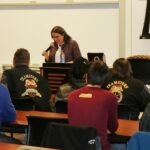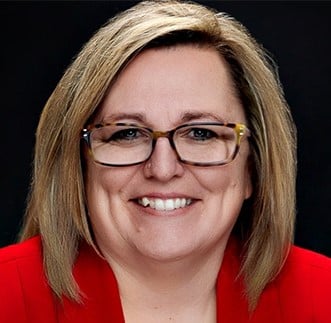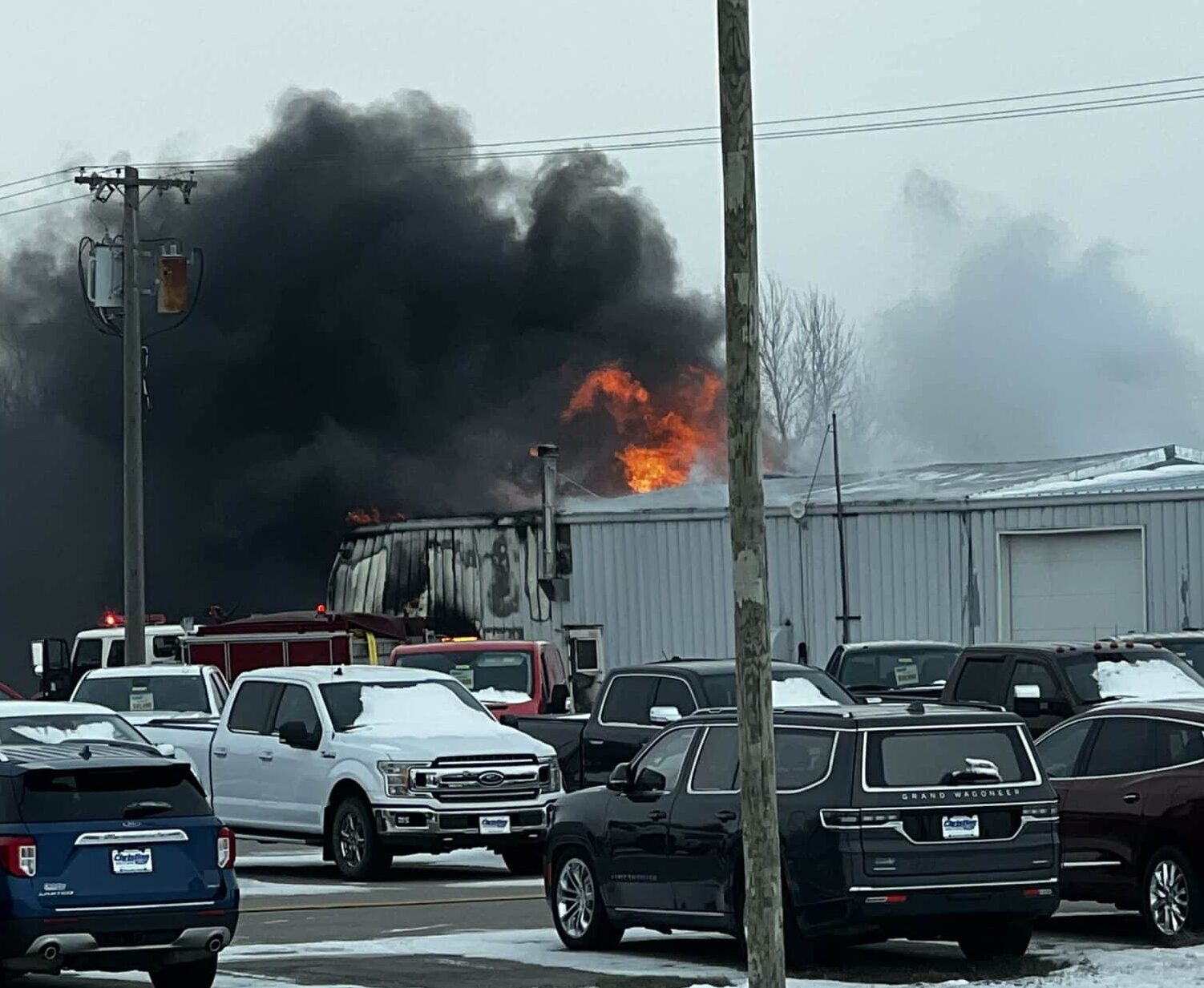University of Minnesota President Joan T.A. Gabel is making her first official trip to Crookston since becoming President of the University of Minnesota System in July. Each campus requested when to have Gabel visit following her inauguration on September 20 and UMC chose this week so Gabel could attend the annual Torch & Shield Award and Donor Recognition event at the University of Minnesota Crookston. Gabel also hosted a campus community forum Wednesday and will host a community forum on Thursday at 7:30 a.m. in the Sargeant Student Center’s Prairie Lounge.
Gabel said she sees Crookston as a campus with a strong sense of self-awareness working to amplify its distinct attributes. “I’d say strengths are a really strong sense of self-awareness about what is really strong here and strategic ways to amplify those because you want to lean into your distinction,” said Gabel. “One of the things I really like about what the chancellor is doing is she’s not doing that amplification at the expense of the core excellence of the place which is a very strong sense of community around the educational process, high student/faculty/staff collaboration, strong community partnership. I think the challenges are not unique to Crookston. I think Crookston is simply experiencing a national trend around student demand. Broadly speaking, we talk about this at every high ed conference, every place we go to, is what is next for us particularly on regional or comprehensive campuses. What does it mean to meet students where they are when there are fewer of them? What is our place within the spectrum of opportunities that students are pursuing? What is our value proposition? I would describe that as a national challenge in which Crookston has its fair share, but I don’t think it’s a Crookston problem.”
Since 2018, UMC has received funding from the system to update the bleachers and sound system in Lysaker Gymnasium totaling about $500,000. They also received a one-time allotment of $350,000 to start the Trap Shooting Team, Men’s and Women’s Cross Country, and Men’s Hockey. Additionally, Gabel told the faculty, staff, and students that there are additional requests underway for flooring the gymnasium, and requests for the baseball field in addition to the recent press box for bleachers and irrigation. As for a major investment to bring the facilities up to the standard one would expect from the University of Minnesota, Gabel said he has yet to see all of the facilities on her trip but that continual investment is a need for quality and to attract students, keep them safe, and have a positive fan experience. “I haven’t seen all the facilities,” said Gabel. “I know over the course of time we’ve made some pretty significant investments into the facilities, close to three-quarters of a million dollars in the last couple years, that doesn’t mean we’re done. But I wouldn’t want anyone to think that we’re ignoring the fact that all facilities require continual investment in order to maintain their quality, and be suitable for the ability to attract, keep students safe, have a good fan experience, etc. There are facilities across the Crookston campus that are a part of our request to the legislature this year academic and otherwise. All of our campuses have different requests like that going at the same time and we take all of them very seriously. We rely very much on our community partners and the Chancellor [Mary Holz-Clause] who have that day in, day out, touch with those facilities to make sure we’re paying attention to the right things.”
UMC’s on-campus enrollment has been declining for a number of years. Moreover, with the added struggles in agriculture likely to impact many current and future UMC students Gabel addressed how the system was preparing to support students financially. “All of our campuses have students from all over the state going to all of our campuses,” said Gabel. “So, the challenges that our agricultural partners are facing, and other sectors too, are sure going to affect their financial capacity. We have a set of scholarships that are targeted specifically around need, those remain robust. We do different things to allocate resources to that. We have the Promise Program, we also have Philanthropically funded scholarship programs. We’re starting a Legacy Scholars program that is in its early days but will grow. That’s for students that are particularly interested in agriculture or first-generation, and that will touch a lot of the students you’re describing. We have federal support that we understand remains a commitment of the federal government. So, what we try to do is stack the federal support and that state support that is guaranteed with the philanthropical support that sometimes goes up and down to get the students where they need to be. On each campus, we also have some level of emergency support for students that find themselves in a financial crisis or need a bridge. And all of the Chancellors and myself are discussing this to make sure that we’re attending to those resources and thinking about when we might need to deploy.”
Holz-Clause also added that UMC has revamped its student success model to help identify students who need assistance earlier. Adding that through her own experience as a farm wife in the 1980s she believes the University of Minnesota is more prepared to implement support systems for students and their families. “Here locally we have really revamped the way we look at student success,” said Holz-Clause. “We’re very much in an intervention model. So, all of our professors are communicating with our student success center if we’re starting to see some characteristics or behaviors so we can be involved very early in intervening with mental health and other issues. We have one philanthropist who has said please use my funds for emergency funds for students who may be in this situation, so we’ll use those funds along with the state and federal monies. We have very much changed our approach with our financial aid. We’re very much in a moment, I think, where we’re looking to ensure that every potential opportunity or availability for any kind of financial aid is used for that student for them to be able to continue their education. I personally can speak as a farm wife in the 1980s and I remember that we, as a society, were way to slow and not aggressive enough in addressing this issue. I guess the good thing that came out of those troubled times is that now we are recognizing and intervening earlier. We have more support systems and we within the University of Minnesota will be putting all of those support systems we have in place to support those families and students.”






